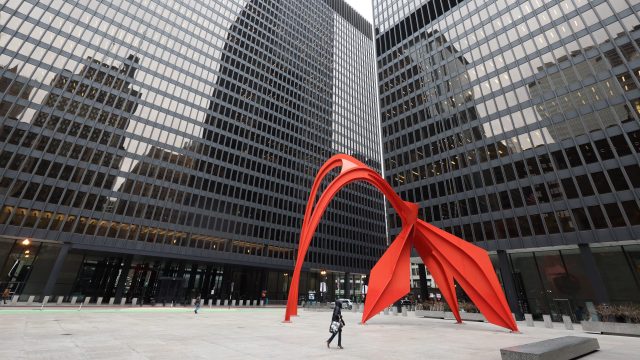T
he federal government's presence in Chicago is poised to undergo a significant transformation as the Trump administration embarks on a plan to drastically reduce its footprint nationwide. This shift could have far-reaching implications for the city's downtown office market, which has been struggling with high vacancy rates.
Chicago is home to 19 federally owned properties, including iconic buildings like the John C. Kluczynski Federal Building and the Ralph H. Metcalfe Federal Building. The government also leases over 2 million square feet of space throughout the metro area, with a significant presence in downtown Chicago. However, a pullback by the federal government could exacerbate the city's office market woes.
The General Services Administration (GSA), which oversees most federal offices, has not released detailed plans for downsizing its footprint in Chicago. A recent report from Wired magazine suggested that "non-core" assets, including the Kluczynski building, may be sold, while "core" assets like the Everett M. Dirksen U.S. Courthouse would remain under federal control.
GSA officials have stated that they are reviewing options to optimize their footprint and building utilization, but tenants of federal buildings in Chicago say they are unclear about specific steps the agency might take. A message from GSA's newly hired commissioner, Michael Peters, emphasized the need for a significant reduction in non-Department of Defense federal building space, citing excessive deferred maintenance costs.
The strategy is an acceleration of trends that have been underway for over a decade. The GSA has already shed nearly 21 million square feet of leased space since 2012, and Robin Carnahan, former director of the agency, had proposed further reductions in 2023. However, the Trump administration's plan to deepen cuts in owned and leased space adds a new layer of complexity.
While some federal buildings in Chicago may be attractive to potential buyers, others could prove challenging to sell due to their location and condition. The government's main Central Loop office properties, for example, have been hit hard by the pandemic and remote work trends. However, if the government were willing to sign long-term leases and keep them filled, these buildings could still be viable options.
Ultimately, the future of the federal government's footprint in Chicago remains uncertain, with many questions surrounding the specifics of the downsizing plan and its potential impact on the city's office market.














